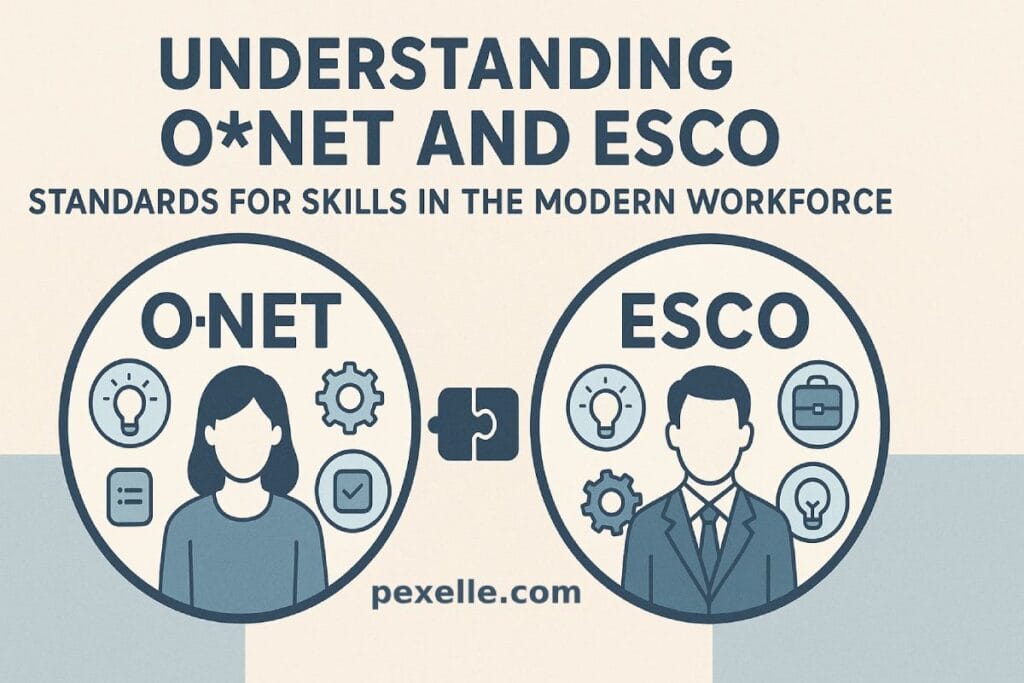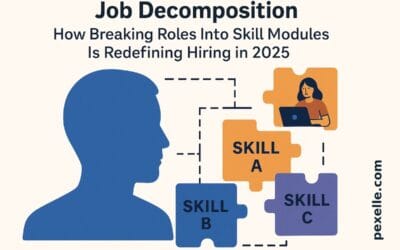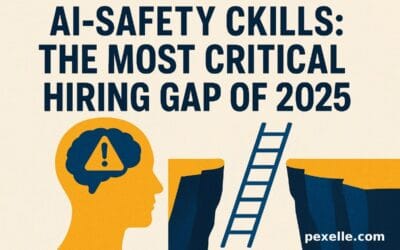Understanding O*NET and ESCO: Standards for Skills in the Modern Workforce

In the age of rapidly evolving job markets and digital transformation, having a standardized framework for defining, classifying, and analyzing skills is crucial. Two of the most influential systems in this space are O*NET (Occupational Information Network) from the United States and ESCO (European Skills, Competences, Qualifications and Occupations) developed by the European Union. Both play pivotal roles in shaping how governments, employers, educators, and job seekers understand and organize human capital.
What is O*NET?
The Occupational Information Network (O*NET) is the U.S. Department of Labor’s primary source of occupational data. Designed to replace the older Dictionary of Occupational Titles (DOT), O*NET offers a comprehensive database that profiles nearly every job in the U.S. economy. It categorizes occupations based on a wide array of descriptors, including:
- Skills (e.g., critical thinking, active listening)
- Abilities (e.g., oral comprehension, manual dexterity)
- Knowledge areas (e.g., mathematics, customer service)
- Work styles, values, interests, and tasks
One of the main strengths of O*NET is its data-driven and dynamic structure. It is continuously updated using surveys and expert input from job incumbents and analysts. Its skill framework plays a major role in workforce planning, curriculum design, career counseling, and job matching in the United States.
What is ESCO?
ESCO (European Skills, Competences, Qualifications and Occupations) is the multilingual classification system developed by the European Commission. Unlike O*NET which is U.S.-centric, ESCO is designed for the European labor market and education systems. It identifies and categorizes:
- Skills and competences
- Qualifications (formal credentials and certifications)
- Occupations
ESCO is deeply integrated with EU digital tools like EURES (the European Job Mobility Portal), helping to bridge the gap between education and employment across member states. ESCO supports 27 official languages, making it a powerful tool for international mobility, skills matching, and policymaking within the EU.
Key Differences and Complementarity
While both frameworks share the goal of improving labor market efficiency and transparency, they differ in structure, methodology, and use cases:
| Feature | O*NET (USA) | ESCO (EU) |
|---|---|---|
| Origin | U.S. Department of Labor | European Commission |
| Language | English | Multilingual (27+ languages) |
| Focus | Occupational analysis, job matching | Skills transparency, EU mobility |
| Skill Types | Basic, Cross-functional, Technical | Transversal, Job-specific |
| Integration | U.S. Job Banks, Workforce Boards | EURES, Europass, national portals |
| Update Mechanism | Empirical surveys (job incumbents/experts) | Expert groups and stakeholder input |
Despite these differences, both systems are aligned in their commitment to a skill-based economy. Increasingly, international initiatives aim to map and harmonize these frameworks to enable global talent mobility and curriculum equivalency.
Why These Standards Matter
In a world where skills evolve faster than job titles, standards like O*NET and ESCO provide a structured and interoperable way to describe human capabilities. They allow:
- Policymakers to make informed decisions about education, training, and immigration
- Employers to write accurate job descriptions and assess skill gaps
- Educators to align curricula with market needs
- Job seekers to explore career paths and identify necessary skills for transitions
Moreover, as digital platforms, AI-driven tools, and smart labor market analytics grow, these standards are becoming foundational for automated resume parsing, skill taxonomies, and upskilling pathways.
Conclusion
O*NET and ESCO are more than just databases — they are pillars of modern workforce development. Understanding and leveraging these standards is essential for building agile education systems, responsive employment services, and competitive economies. In the future, greater interoperability between such systems may pave the way for a truly global skills infrastructure, where talent can move seamlessly across borders and industries.
Source : Medium.com





Nice post! 1754809856
I always was concerned in this topic and stock still am, thanks for putting up.